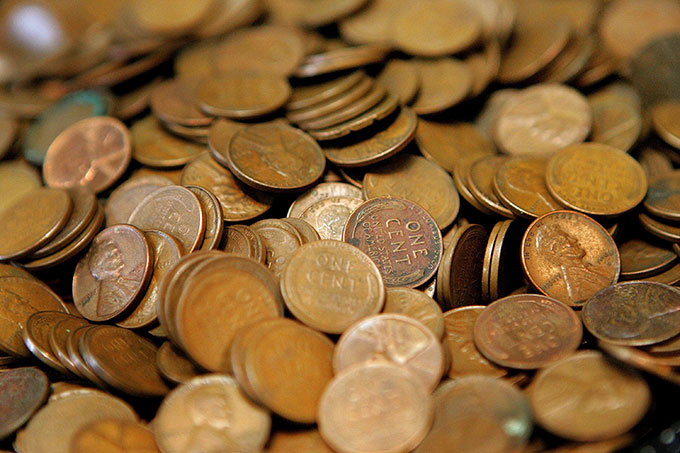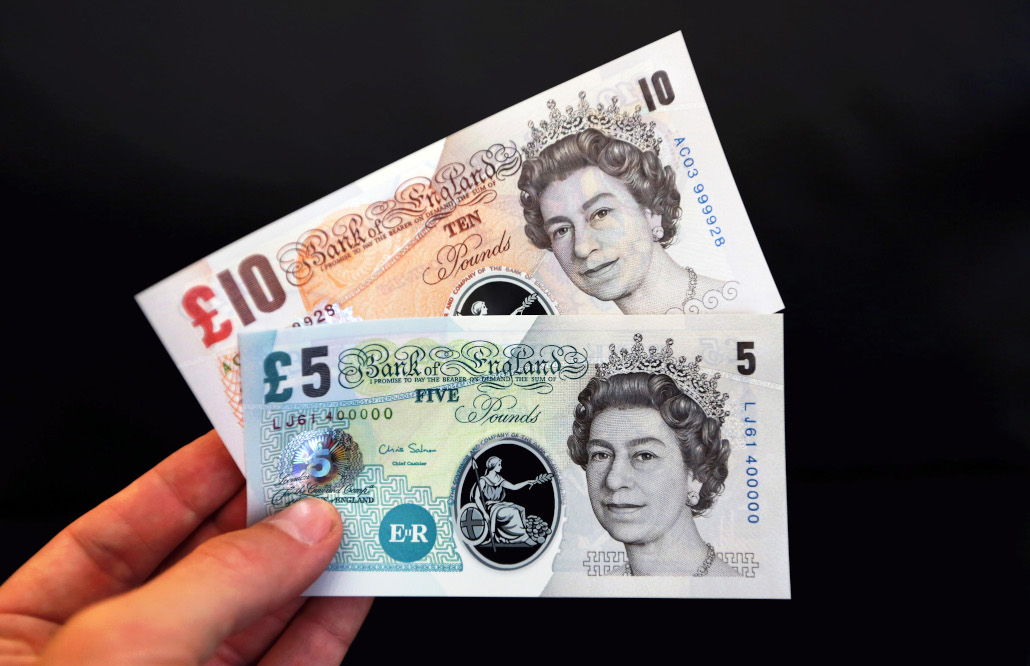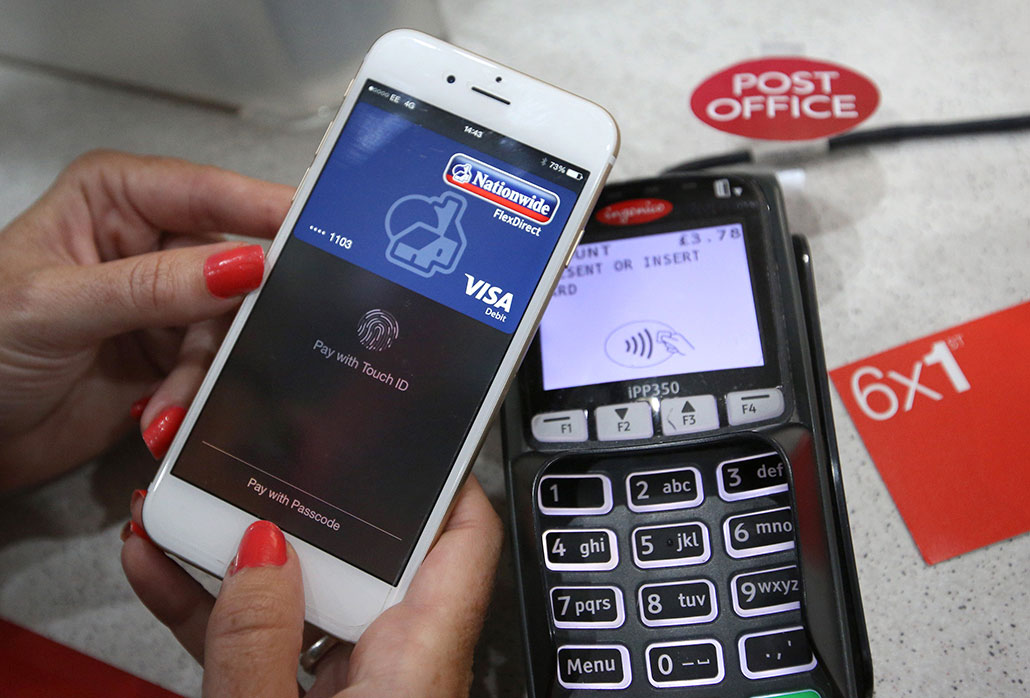“What’s in your wallet?” That’s an old credit-card slogan. But some people no longer carry wallets. They tuck a driver’s license and credit card into a pocket on their smartphone case. Or, they pay with a smartphone app.
Even before the COVID-19 pandemic, nearly one in three U.S. adults didn’t use cash during a typical week. So found a Pew Research Center survey from 2018. Convenience, safety and security all affect how we choose to pay for things. Environmental concerns do, too.
Each time you pull out a credit or debit card, use a phone’s wallet app or hand over cash, you take part in a complex system. Some parts of that system make things, like coins, bills or cards. Other parts move money between buyers, sellers, banks and others. Used cash, cards and equipment will eventually be disposed of, as well. Each part of this system uses materials and energy. And all parts produce waste.
Now researchers are looking more closely at how “green” these payment systems are. They’re finding buyers can help cut some of the environmental costs, no matter how they pay.
To gauge the full “cost” to society of money or any other system, researchers can perform what’s called a life-cycle assessment. It looks at all the environmental impacts of a product or process. It starts with mining, growing or making the raw materials. It includes what happens while something is in use. And it considers the final disposal or reuse of things.
“Even though raw materials are the first step, in fact there are raw materials added in at every single step along the journey,” notes Christina Cogdell. She’s a cultural historian at the University of California, Davis. She studies how the role of energy, materials and design has changed over time.
For money, raw materials go into each step of something that is “made” or assembled. Fuels are the raw materials for energy to manufacture products and transport them. More energy goes into using products. Recycling or disposal also requires energy, plus water, soil or other materials.
People are unaware of most of those steps, so they can’t judge if one form of payment is dirtier or more costly. And that’s a problem, researchers say. It’s also what has motivated some of them to show more about the costs of how we pay for our lifestyles.
A life-cycle assessment doesn’t tell you what to do, says Peter Shonfield. He’s a sustainability expert with ERM, or Environmental Resources Management, in Sheffield, England. However, he notes, “it gives you an informed basis for making a decision.”
Cash flow
In 2014, three of Cogdell’s students examined the life cycle of a U.S. penny. People mine zinc and copper ores at different places. Multiple steps go into separating the metals from these ores. The metals then go to a factory. Copper coats each side of a thicker zinc layer. Then the metal is shaped into disks known as coin blanks. Those disks travel to U.S. Mint plants. Different processes there form the disks into coins.

Packaged coins travel to banks that are part of the Federal Reserve, the United States’ central bank. These ship the pennies out to local banks for release to the public. All of those steps use energy and produce waste.
And it doesn’t stop there. Coins change hands many times. Over and over, the coins move among buyers, sellers and banks. Years later, Federal Reserve banks collect worn-out pennies. These are melted and destroyed. Again, every step requires energy — and produces pollution.
But cash is more than just pennies. Most countries use a variety of coins. Their ingredients vary. So does their ability to withstand wear. Most countries also use banknotes, or bills, with different values. What these are made from also varies. Some countries use cotton-fiber paper. Examples include the United States, India, South Africa and European nations that adopted the Euro system. Other places use banknotes made from polymers, or plastics. Canada, Australia and Great Britain are some of those places.
Great Britain began its switch from cotton-fiber paper to plastic in 2016. Before that, Shonfield and others compared the environmental impacts of the two types of bills. At the time, he worked with PE Engineering (now Sphera) in Sheffield, England.
Both types of bills had pluses and minuses, they found. Raw materials for the polymer bills include chemicals from petroleum and metal for foil stamps. But growing cotton and making paper also have impacts. And both types of bills must be moved from place to place, run through automatic teller machines (ATMs) and eventually disposed of.

On balance, their 2013 report found, polymer bills were greener. They simply last longer. So over time, “you don’t have to create nearly as many banknotes with plastic notes [as with paper],” Shonfield says. That cuts the overall need for raw materials and energy. And, he adds, plastic bills are thinner than paper. More of them fit into ATMs than older paper bills. So, keeping the machines full takes fewer trips. .
Nicole Jonker is an economist with De Nederlandsche Bank in Amsterdam. That’s the Dutch central bank. She and others looked at the environmental impacts of cash in the Netherlands. It’s one of the 19 countries that use Euros.
Jonker’s group considered the raw materials and steps in making metal coins and cotton-fiber banknotes. The researchers added in energy and other impacts as cash is moved around and used. And they looked at the disposal of worn-out bills and coins.
About 31 percent of those impacts came from making coins. A much bigger share — 64 percent — came from energy for running ATMs and transporting bills and coins. Fewer ATMs and more renewable energy could reduce those impacts, the study concluded. That group shared its findings in the January 2020 International Journal of Life Cycle Assessment.
Paying with plastic
Debit and credit cards offer convenience to both buyers and sellers. A debit card tells the company that issued it to take money from a customer’s bank account and send it to someone else. Using the card is like writing a check, without the paper. A credit card, on the other hand, is part of a loan-and-payback system. The card issuer pays money to a seller when its customer buys something. The customer later reimburses the card issuer for the amount, plus any interest.
Most credit and debit cards today are plastic. Their raw materials include chemicals made from petroleum. Extracting oil from the Earth and making those chemicals uses energy and releases pollution. Making the chemicals into cards uses more energy. That process also emits greenhouse gases and yet more pollution. Cards also have magnetic strips and smart-card chips with bits of metal. Those add even more to the environmental costs.
But chips stop billions of dollars in credit-card fraud each year. And dealing with that fraud would have its own environmental costs, explains Uwe Trüggelmann. He’s a smart-card expert in Canada who heads TruCert Assessment Services. It’s in Nanaimo, British Columbia. Even if the cards could be recycled, the extra handling could still be higher than the impacts of just trashing them, he notes.
“A transaction is more than just what happens between the merchant and the customer,” Trüggelmann says. “It’s crucial that we always look at the whole sequence of events between these two points.” That process involves computers and other equipment at stores, card companies, banks and elsewhere. They all use raw materials and energy. They all produce waste. And if paper-card statements are mailed, there are still more impacts.

Surprisingly, using debit cards has a larger environmental impact than making or disposing of them, Jonker and others found. The group’s life-cycle assessment of Dutch debit cards added up all the impacts from making the cards. The researchers also added up impacts from making and using payment terminals. (These read data on debit and credit cards and process payments with them at checkout counters.) The team even included data centers that were part of the payment network. In all, they considered raw materials, energy, transportation and eventual disposal of the equipment.
Altogether, each debit-card transaction had about the same impact on climate change as 90 minutes of lighting by an 8-watt low-energy light bulb, the team showed. There also were some other impacts from pollution, the depletion of raw materials and more. But those impacts were all minor compared to other sources of pollution in the Dutch economy, the group found in 2018. It shared those findings in the International Journal of Life Cycle Assessment.
Still, Jonker points out, “Paying with your debit card is a very environmentally friendly way.” Her group’s more recent analysis, she says, shows the environmental cost of a debit-card payment is about one-fifth that of cash.
Jonker hasn’t studied credit cards in detail. However, she expects the environmental cost of credit-card payments “may be slightly higher than that of a debit card.” The reason: Credit cards require extra steps. Card companies send bills to customers. Customers then send in payments. Paperless bills and payments, however, would reduce some of those impacts.
Credit and debit cards don’t have to be made of plastic. Some companies now issue metal ones, notes Sara Rathner. She writes about credit cards for NerdWallet. That consumer-finance website is based in San Francisco, Calif. In theory, metal cards last longer than plastic and may be recycled. Mining and processing metal has its own life-cycle costs, however. So it’s unclear how costs of metal cards would compare to those for plastic cards.

No paper, no plastic
Wallet apps store data on a phone about someone’s credit or debit cards. They transmit those data to terminals when you pay. And the apps don’t require users to carry a physical card. The more people use digital wallets, Rathner says, “the more it cuts the need for physical credit cards.” She expects that soon card companies will provide digital access first. You would get a physical card only if you needed one.
Paying bills online doesn’t require a physical card, either. And it cuts out steps for writing and mailing checks. “Producing checks takes paper, which comes from trees,” points out Chanelle Bessette. She’s a banking specialist, also at NerdWallet. Besides, she adds, after processing, checks have no use. “It’s not really a sustainable practice.”
Most traditional banks now offer online banking. And some companies that do this don’t even have branch offices, Bessette says. That avoids the impacts of constructing and maintaining those buildings.
Then there are digital currencies, where money exists only online. Their impacts depend on how they’re set up. Bitcoin and various other so-called cryptocurrencies have huge environmental impacts. They rely on big, spread-out networks of computer users to keep the systems secure. Under those systems, cryptocurrency “miners” compete to add each new chunk, or block, to a long digital ledger called a blockchain. In return, successful miners get rewards. Often those are fees paid by parties to deals that appear on the new blocks, plus a bit of the cryptocurrency. The biggest mining networks can use more energy than some countries. Mining businesses also replace their computers often. That, too, creates lots of waste.
In contrast, there are now some central-bank digital currencies, or CBDCs. A government authority sets the value and issues this online currency. It’s like government-issued money, but without the physical money. People can then spend the digital money using a phone app.
Early CBDCs include Cambodia’s Bakong, the Bahamas’ Sand Dollar and the EC dollar DCash system used by several Eastern Caribbean countries. Other countries that have introduced or run pilot programs for CBDCs include China, Nigeria and South Africa.
Many more countries are looking into digital currencies. They are exploring how that form of money might work with banking systems. “They are also taking into account the impact on the environment,” Jonker says. “They don’t want it to be like Bitcoin.”
The impacts from any CBDC will depend on the exact setup, says Alex de Vries. He’s the founder and head of Digiconomist in Almere in the Netherlands. He also works with De Nederlandsche Bank in that country. Central banks’ digital currencies probably won’t use the same type of mining-based system on which Bitcoin and many other systems rely. They may not even need blockchains. So the impact of these CBDCs could be similar to conventional cash. There might even be some energy savings if CBDCs make some other parts of the money system obsolete, de Vries says. Physical transportation of cash could go down, for example, and fewer banks might be needed.
What you can do?

The next time you pay for something, stop and think. “Limit the number of transactions that you’re making,” says Trüggelmann at TruCert. One purchase of five items will use less energy than five separate transactions. You might cut out some packaging and transport costs, too.
“Your banking relationships last a long time,” he adds. Check a company’s website. See if they’re taking meaningful steps to lower their climate-change impacts. For example, a company might pay to offset greenhouse-gas emissions. “That’s different from someone who says, ‘We’re printing your monthly account statement on recycled paper,’” notes Trüggelmann. Offsetting greenhouse-gas emissions would have a much bigger benefit for the environment.
“At NerdWallet, we’ve been trying to write more reviews of sustainable, eco-conscious banks,” says Bessette. She also suggests looking at ways to cut down on paper and trips to the bank. For example: “Send money digitally.”
“If you want to use cash, please do so,” Jonker says. But treat your bills carefully. Then they’ll last longer. “And use the coins you get as change for making payments instead of storing them in a piggy bank or jar.” These actions will limit the need to make new coins and banknotes.
Perhaps most importantly, think carefully before buying new things. In most cases, the things you buy have bigger environmental impacts than the way you pay for them.
“The more stuff you buy, the worse it is for the environment,” says Rathner at NerdWallet. Whether it’s money, clothes or even packaging, she says, “Any time you can use an item longer and extend its life, you’re doing something helpful.”
#Physics | https://sciencespies.com/physics/how-we-choose-to-pay-has-hidden-costs-for-the-planet/

No comments:
Post a Comment